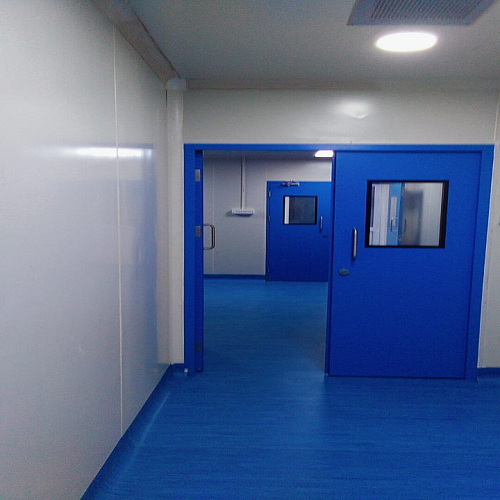Clean Room Door
- Home
- Clean Room Door
Clean Room Door

Cactus Profiles Pvt Ltd is a leading supplier of premium quality Clean Room Door systems for pharmaceutical, biotech and healthcare industries. Our doors are designed to meet the strictest industry standards and provide unparalleled protection against contamination. With over 20 years of experience, we have established ourselves as a trusted provider of clean room solutions.
At Cactus Profiles, we understand the critical importance of maintaining a sterile environment in pharmaceutical and healthcare facilities. Our clean room doors are constructed with high-grade materials to ensure superior performance and reliability. We offer a wide range of door options including sliding, hinged, and bi-fold doors to suit different application requirements.
One of the key features of our clean room doors is their airtight seal. This prevents air leakage and minimizes the risk of contamination from outside sources. Our doors also come equipped with advanced locking mechanisms for added security and peace of mind.
In addition to their functional benefits, our clean room doors are also aesthetically pleasing. We understand the importance of maintaining a professional and modern appearance in pharmaceutical and healthcare facilities. That’s why our doors are available in a variety of finishes, including stainless steel, aluminum, and powder-coated options.
We also offer customizable door sizes to fit any clean room layout. Our team of experts works closely with clients to determine the ideal door size and configuration for their facility. We understand that every clean room is unique and requires tailored solutions to meet specific needs.
When it comes to maintenance, our clean room doors are designed for easy cleaning and upkeep. They are constructed with smooth surfaces and minimal crevices to prevent dirt and bacteria buildup. This helps to maintain a hygienic environment and reduces the risk of cross-contamination.
Technical specifications
- Clean room doors are environmentally friendly and thermal resistant
- The doors are easy to assemble
- We use double-layer steel and frame, ensuring that the door can stand up to and work properly over the years.
- This also helps to maintain their structure overall and looks appealing to various clean room users.
- These clean room doors are hygienic and corrosion resistant
- Clean room doors have to handle high humidity level
- The best quality, durability, and concentration of clean room doors for different industries.
- We ask for every single requirement of the client and give them exactly what they want.
If you require Clean Room Doors with particular dimensions, materials, or installation services, please inform us. We are here to help you find the ideal solution tailored to your needs.
India | Delhi | Uttar Pradesh | Uttaranchal | Chandigarh | Ludhiana | Madhya Pradesh | Noida | Baddi | Gurgaon | Chennai | Hyderabad | Odisha | Bangalore | Vishakhapatnam | Haryana | Mumbai | Kerala | Cochin | Tamil Nadu | Arunachal Pradesh | Itanagar | Nagpur | Jaipur | Ladakh | Jammu | Srinagar | Gangtok | Sikkim | Bhutan | Paro | Lucknow | Agra | Mathura | Manipur | Tripura | West Bengal | Meghalaya | Nagaland | Mizoram | Bangladesh | Kolkata | Guwahati | Surat | Jabalpur | Pune| Bikaner | Jodhpur | Assam | Daman & Diu | Dahej | Ahmedabad | Ghaziabad | Gujarat | Goa | Greater Noida | Bareilly |

